This is a feature from Issue 16 of Charitable Traveller.
The phrase ‘community tourism’ is increasingly heard in travel, but what does it actually mean? Community tourism needs to relate to localised ownership of a project or property, to fair pay, to gender equality, to the maintenance of traditional culture (unadulterated and not simply performed in song and dance shows), and to ecological integrity. On many occasions, especially on safari, I’ve been to lodges heralding their involvement with communities, along the lines of financing a new classroom or the like. Generous, of course, but ultimately maintaining a dependency culture, which will not benefit local communities long-term. Better to seek out a lodge funded, run, and established by indigenous people, like Sabache Camp in Samburu, Kenya. This shining example is 100% built and owned by the Samburu on their own land designated as a private reserve, with all tourist revenue going to the community’s 145 families.
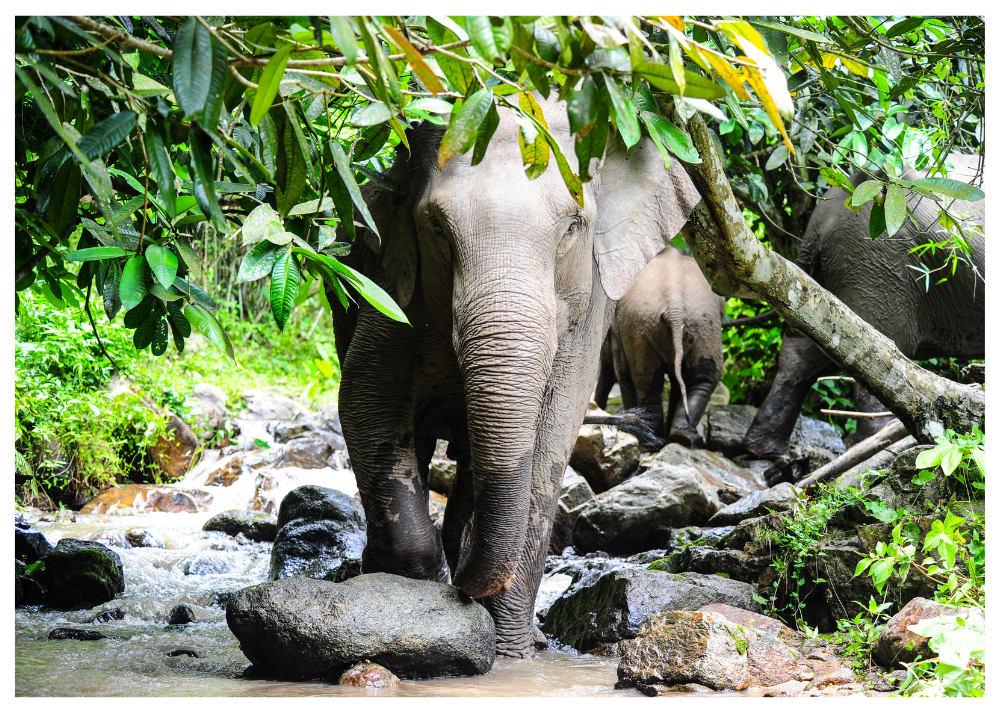
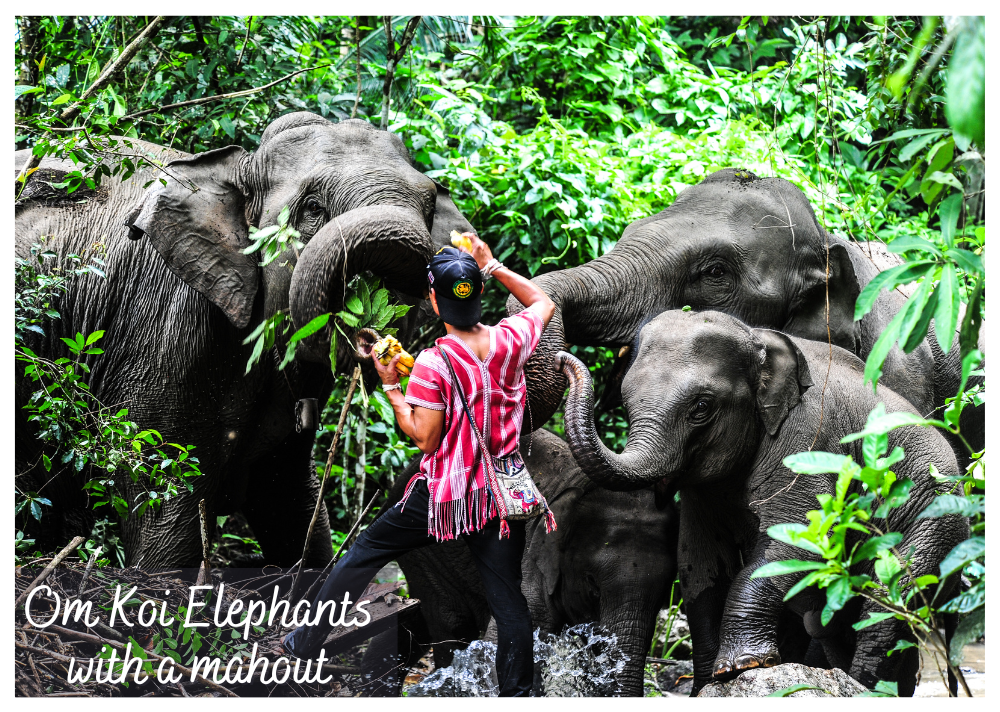
Six-month-old baby Valentine is out of control. Amid entangled jungle in the south-west of the Chiang Mai province, this baby elephant, born February 14th, careens around like a ball-bearing in a pinball machine barging at her mahout (her keeper) and forcing us, Om Koi’s first community ecotourists, to sidestep like artful matadors.
It’s an unlikely ethical encounter with Thailand’s elephants, as all too often most tourists encounter them in riding camps maltreated and living in chains. But her mother, Moe-Pra, who gave birth to Valentine in the wild, is among 55 former captive elephants at Om Ki, put back into their native jungle courtesy of an inspiring community tourism and elephant welfare project by a non-profit called Gentle Giants, and the Karen indigenous hill tribe people.
As the co-founder of an Asian elephant welfare campaign called Friends of Bunka, I’ve investigated the woeful impact tourism plays in ensuring elephants endure wretched existences. Tourists who ride or bathe with elephants rarely see the mahouts deliver painful reminders of their control by sleight of hand, by nails or bullhooks. Such attractions deliver few lasting benefits to marginalised ethnic communities and normalise welfare abuse.
By 2020 Gentle Giants was fundraising to feed some of Thailand’s estimated 3,800 captive elephants that were experiencing a welfare crisis as riding camps shut down during Covid. That’s when they heard about 55 elephants at Om Koi. These had been taken back from the camps to the jungles of their owners, the Karen, a Sino-Tibetan hill tribe people in northern Thailand. But their future looked uncertain.
“These elephants were to be sent to the logging industry as the owners had no choice but to rent them out to feed their families,” says Gentle Giants co-founder, Diana Munoz. Gentle Giants was raising £28,000 per month to support Om Koi keep their elephants in their forest when the penny dropped on how they might make this arrangement self-sustaining. Launched in 2022, Project Om Koi Evolution offers travellers an immersive homestay experience in hill tribe culture alongside viewing elephants interacting in their native habitat.
Visitors’ £560 week-long fee goes entirely to the Karen villagers.
“The Karen were able to see a different way to make money from their elephants,” says Munoz. “Many of the men used to travel away with their elephants as mahouts to camps and could be separated from their families for months. The project enables them to stay at home,” says Munoz.
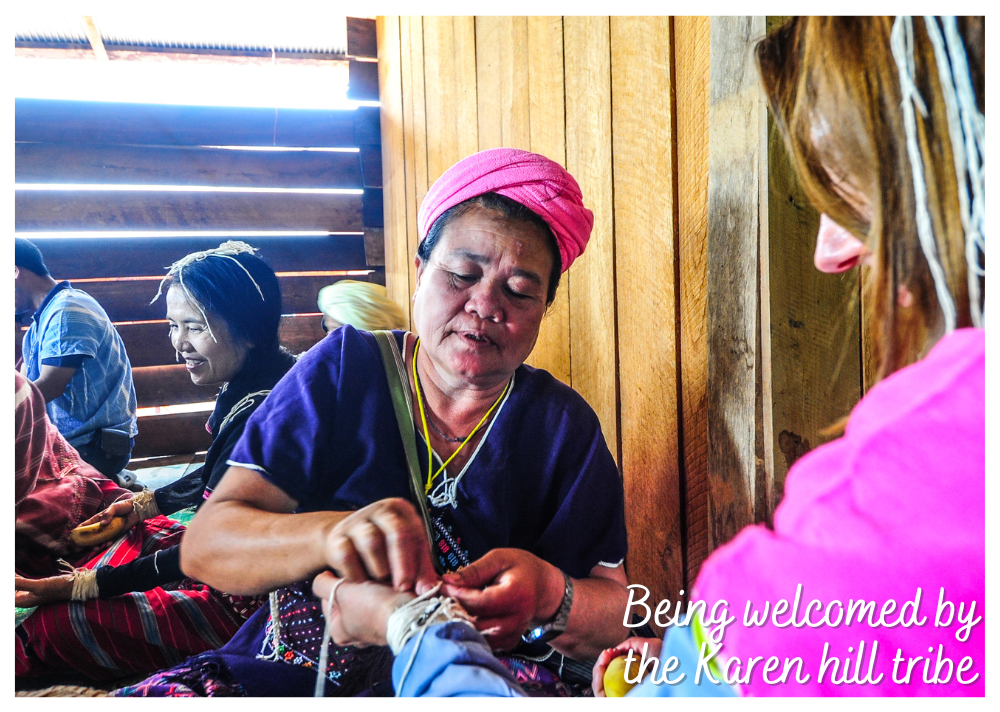
It’s a seven-hour drive through the ever-thickening jungle to Om Koi from the city of Chiang Mai. The village shaman, his toothless smile revealing red gums from betel nut consumption, welcomes us in traditional Karen fashion by leading the community in tying dozens of white cotton threads around our wrists.
Over a week, the villagers offer cultural activities combined with jungle treks to see elephants now at ease. I volunteer in the school, helping the teacher with an English class, “Tell me ten things Thailand is known for,” I ask the children. “Weed,” says a little girl with a ponytail, to the amusement of her classmates. The most arduous activity is a morning planting rice. Mid-calf deep in squelchy mud, I take handfuls of saplings and prod them into the flooded paddy, watched by the community bemused by my wonky rows.
The Karen villagers are delighted with the project. “I want to see my young daughter growing up but I need money to send them to school. Our elephants were worked too hard at the camps, and I was sorry for them, Now we all have a better life,” says village headman, Chok Sai.
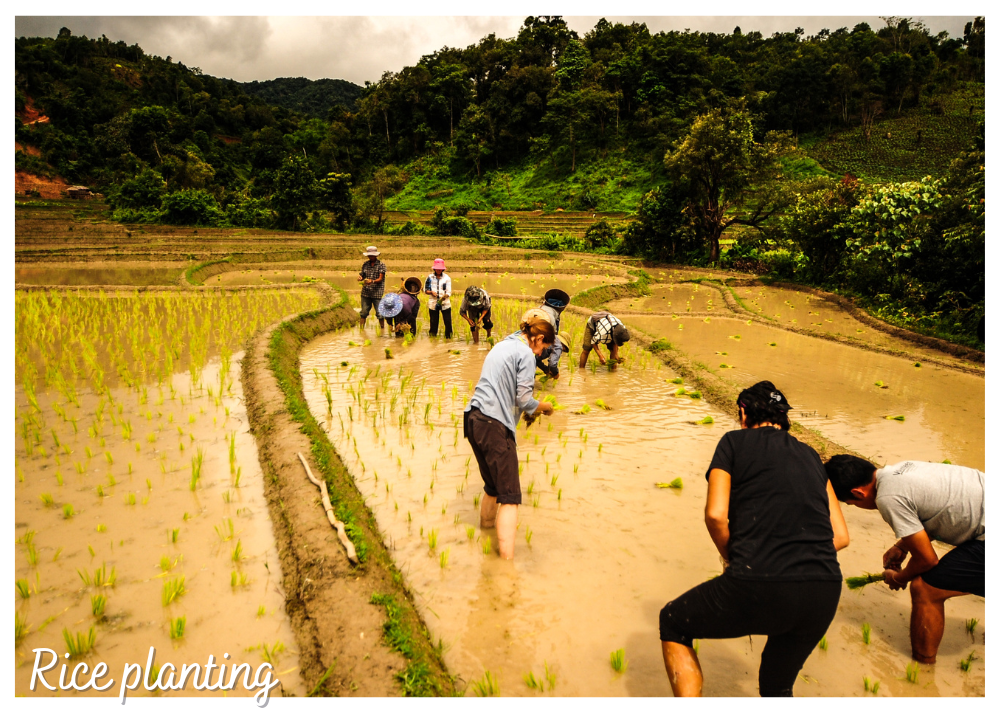
Our daily treks prove a unique experience in Thailand. We watch them reconnect with their wild instincts while the sightings are intimately close because they’re so unperturbed by human presence. Abd their mahouts have been repurposed to keep a watchful eye over them to ensure they do not stray too close to the village crops.
In a river bed chocked with rattling bamboo, we meet a mother whose baby succumbed to the EEHV herpes virus (prevalent among captive elephants), yet shortly after she adopted a tiny, orphaned boy, Par-Gue-Meh, whose own mother died from ingesting agricultural toxins. He trails after his adopted mother, his stick-thin little trunk raised seeking milk. Their bond is deeply touching.
“We truly believe this can break the mould of abusive elephant tourism and within a prospering community setting it shows visitors how incredibly beautiful it is to see these gentle giants express themselves without fear,” says Munoz.
Coron Island, located in the northern part of Palawan province, is a true paradise. With pristine beaches, beautiful viewpoints, hot springs, world-class diving spots and stunning sunsets, it’s no wonder that it’s regularly hailed as the best island in the world. On the other side of the Philippines is Siargao Island, a teardrop island that’s the area’s surfing capital. Another beautiful spot, it’s facing challenges due to rapidly developing tourism, which is creating environmental degradation, social disruption, and economic inequality. Both of these tropical paradises are prone to cyclones, which I experienced first-hand in December 2019 when Typhoon Kammuri hit Coron Island.
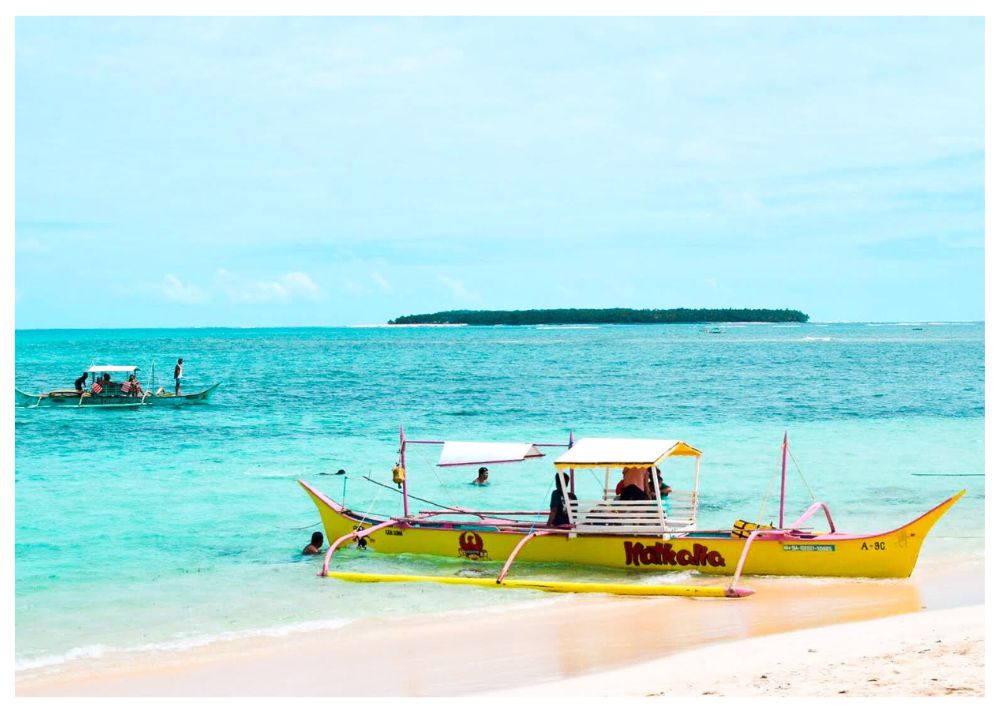
I was stuck in my homestay (Joval Homestay) for two days, yet despite the chaos and amid the strong winds and heavy rainfall, power cuts, cancelled flights and boat tours, locals checked in on each other, came together to help other provinces, and remained positive. Their small actions of kindness and generosity reduced my anxiety and inspired me to support community tourism initiatives both on Coron Island and Siargao.
On Coron Island, community tourism initiatives aim to preserve its natural beauty while empowering local communities by providing them with sustainable income opportunities. Supporting these is a great way for holidaymakers to make a meaningful impact. One initiative is the Calamianes Association of Tourism Establishments, which offers eco-tours that showcase the island’s biodiversity and cultural heritage. Another is the Society for Sustainable Tourism and its Coron Initiative, which runs a community-based homestay programme that allows visitors to experience local life while supporting the community.
On Siargao, visitors can enjoy an incredible viewpoint of coconut trees while participating in community-based tourism activities, such as homestays, cultural tours, and island hopping – the Sun Crew non-profit is a good place to start. You can stay in a traditional Filipino house and learn about the local way of life, join a guided tour to visit a mangrove forest and learn about environmental conservation and beach cleaning, or go island hopping to discover hidden beaches and enjoy fresh seafood cooked by the Siargao people.
“Siargao island has undergone rehabilitation efforts to normalise the local tourism industry, local community initiatives to support those people who lost their jobs and livelihood from the typhoon devastation, especially those working in the tourism industry. Protection measures have been implemented to mitigate the impact of typhoons to the environment and locality,’’ says Zeny Pallugna, Regional Director, Philippine Department of Tourism. As a traveller, I witnessed first-hand the resilience of the community and how they worked together to overcome the challenges brought about by the typhoon. This is the essence of community tourism – promoting sustainable tourism practices while supporting the development of the local communities.

I first visited Guyana in 2004 and immediately fell in love with its thundering waterfalls, pristine rainforest and highlands, wildlife-rich savannahs, colourful cultural heritage and tiny remote Amerindian villages. Often known as the land of six peoples, this little-known country is a cultural and multi-faith melting-pot arising from its unique geographical location at the crossroads of the Caribbean and South America, and its complex history of colonialism, sugar and slavery co-mingles with the many strands of its strong indigenous identity.
Home to nine different Amerindian peoples, including the Caribs, the Arawaks and the Makushi peoples, Guyana is one of the few countries where the indigenous population continues to thrive and where community-owned and led tourism goes from strength to strength, providing an important source of income to local villages as well as multiple socio-economic benefits .
Winning multiple awards for its community tourism just prior to the pandemic and now with a twice-weekly British Airways direct flight from London, plus a burgeoning oil and gas sector, the eyes of the world are now on Guyana in terms of energy, conservation, investment and tourism.
There has never been so much demand to sample its rich biodiversity, stunning scenery and welcoming indigenous community lodges, such as Surama eco-lodge in the Rupununi district, which first opened its doors to travellers (among them the English naturalist Charles Waterton) back in the 19th century. By embracing tourism, this pioneering community has allowed its men to stay on their own land rather than be enticed away by the world of mining and logging. Warm interactions with international visitors have increased awareness and pride in their Makushi heritage and a popular cultural group has travelled around Guyana, singing traditional songs from the village as well as new ones that incorporate the value of eco-tourism to the community.
Here tourism has provided meaningful, paid and empowering employment that has allowed the village to put students through higher education, build a community airstrip and provide local transport. Suramas residents, especially the children, are personally invested in the preservation of the biological diversity that surrounds the village, leading visitors on hikes to nearby active harpy eagle nests, enforcing a ban on wildlife trapping, protecting groves of endangered bullet, letter, greenheart and waramaden trees, and introducing tourists and researchers to vast arrays of rainforest flora with time-honoured medicinal properties. Much like a homestay, Surama eco-lodge offers an easy introduction to the Amerindian way of life with guests’ needs looked after by the friendly team who offer home-cooked meals prepared from home-grown foods with an indigenous influence, nature trails and canoe trips, mini-survival courses and the chance to hear local story tales, myths and songs.
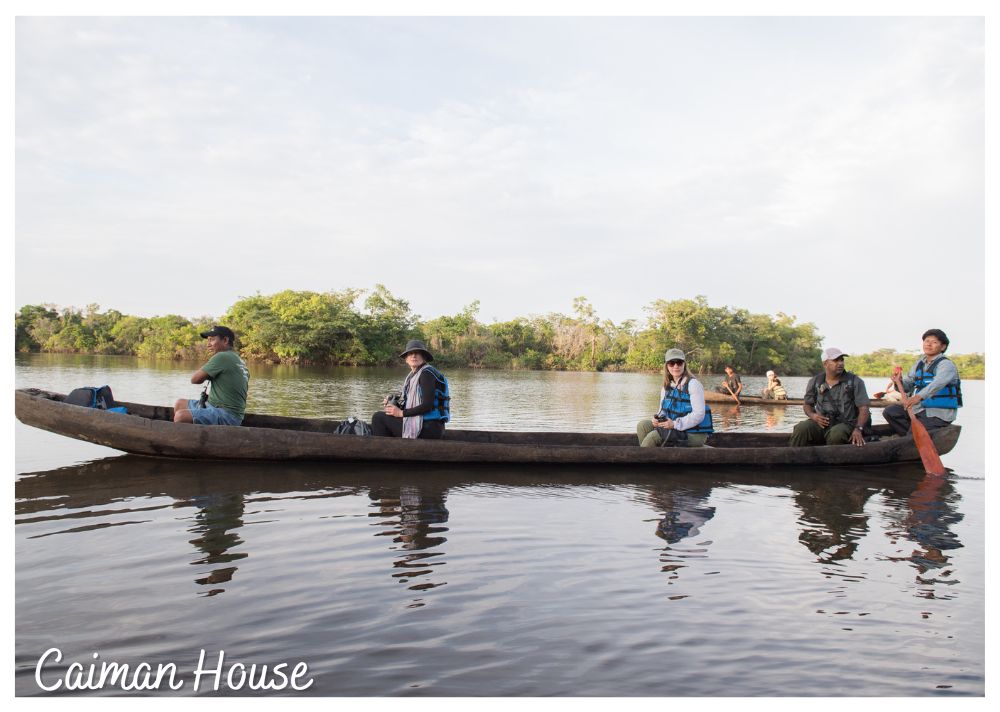
Much like a homestay, Surama eco-lodge offers an easy introduction to the Amerindian way of life with guests’ needs looked after by the friendly team who offer home-cooked meals prepared from home-grown foods with an indigenous influence, nature trails and canoe trips, mini-survival courses and the chance to hear local story tales, myths and songs. A favourite memory of mine is singing the Hokey Cokey with the whole school in the playground and watching the school ecology group perform the Birdy Song, with school kids dressed as local birds such as the bright orange Guianan Cock-of-the Rock.
Further afield, the village of Rewa can only be reached by boat and is now one of the leading community lodges in the country. Years of dedicated hard work allowed the villagers to build their own ecolodge which offers simple but clean, comfortable accommodation. Individual cabins are nestled at the forest edge with one of the best breakfast locations overlooking the river giving you the chance to see giant river otters as you drink your coffee. The excellent guides here take you on village tours, forest treks in search of Goliath bird-eating spiders, or a morning climb up Awarmie mountain for unparalleled views of pristine rainforest and macaws flying beneath you. In the afternoon, visit oxbow lakes strewn with giant waterlilies and teeming with arapaimas, the world’s largest freshwater-scaled fish. which comes to the surface to breathe the air around you. A river drift back to the lodge via a fish barbecue on a sandbank with your local guides gives you a chance to learn about the night sky and to look out for black caiman, tree snakes, and nocturnal birds, spotted with the help of a local guide, before a cold beer or a rum at the Laughing Arapaima bar back at the lodge.

Conservation, science and eco-tourism merge at Caiman House Field Station, an outpost of research and hospitality located in the remote Amerindian village of Yupukari on the savannah lands along the banks of the Rupununi River. A popular nighttime excursion allows guests to observe, or become involved with, the caiman research project which involves capturing and assisting in data collection. This requires the caiman to be weighed, measured and tagged before being released back into the wild and is one of the most exhilarating and exciting wildlife outings I have ever experienced on a sandbank in the middle of nowhere late at night. Profits from this friendly lodge support a public library, computers and internet for the village school and community.
Another newly-launched community tourism project is a trekking and rafting adventure with the Arecuna people of Paruima in the Highlands, visiting three spectacular waterfalls along the way. More and more Guyanese communities are opening their doors to visitors to share and preserve their beautiful country and heritage while offering some of the most authentic and pristine travel experiences in the Americas.
This is a feature from Issue 16 of Charitable Traveller.



Fundraising Futures Community Interest Company, Contingent Works, Broadway Buildings,
Elmfield Road, Bromley, Kent,
BR1 1LW. England
Putting our profit to work supporting the work of charitable causes











For the latest travel advice, including security, local laws and passports, visit the Foreign & Commonwealth Office website.
© 2024 All rights reserved
Made with 
| Cookie | Duration | Description |
|---|---|---|
| AWSELB | session | Associated with Amazon Web Services and created by Elastic Load Balancing, AWSELB cookie is used to manage sticky sessions across production servers. |
| cookielawinfo-checkbox-advertisement | 1 year | Set by the GDPR Cookie Consent plugin, this cookie is used to record the user consent for the cookies in the "Advertisement" category . |
| cookielawinfo-checkbox-analytics | 11 months | This cookie is set by GDPR Cookie Consent plugin. The cookie is used to store the user consent for the cookies in the category "Analytics". |
| cookielawinfo-checkbox-functional | 11 months | The cookie is set by GDPR cookie consent to record the user consent for the cookies in the category "Functional". |
| cookielawinfo-checkbox-necessary | 11 months | This cookie is set by GDPR Cookie Consent plugin. The cookies is used to store the user consent for the cookies in the category "Necessary". |
| cookielawinfo-checkbox-others | 11 months | This cookie is set by GDPR Cookie Consent plugin. The cookie is used to store the user consent for the cookies in the category "Other. |
| cookielawinfo-checkbox-performance | 11 months | This cookie is set by GDPR Cookie Consent plugin. The cookie is used to store the user consent for the cookies in the category "Performance". |
| elementor | never | This cookie is used by the website's WordPress theme. It allows the website owner to implement or change the website's content in real-time. |
| JSESSIONID | session | Used by sites written in JSP. General purpose platform session cookies that are used to maintain users' state across page requests. |
| viewed_cookie_policy | 11 months | The cookie is set by the GDPR Cookie Consent plugin and is used to store whether or not user has consented to the use of cookies. It does not store any personal data. |
| Cookie | Duration | Description |
|---|---|---|
| __lc_cid | 2 years | This is an essential cookie for the website live chat box to function properly. |
| __lc_cst | 2 years | This cookie is used for the website live chat box to function properly. |
| __oauth_redirect_detector | past | This cookie is used to recognize the visitors using live chat at different times inorder to optimize the chat-box functionality. |
| aka_debug | session | Vimeo sets this cookie which is essential for the website to play video functionality. |
| player | 1 year | Vimeo uses this cookie to save the user's preferences when playing embedded videos from Vimeo. |
| Cookie | Duration | Description |
|---|---|---|
| AWSELBCORS | 6 minutes | This cookie is used by Elastic Load Balancing from Amazon Web Services to effectively balance load on the servers. |
| Cookie | Duration | Description |
|---|---|---|
| _ga | 2 years | The _ga cookie, installed by Google Analytics, calculates visitor, session and campaign data and also keeps track of site usage for the site's analytics report. The cookie stores information anonymously and assigns a randomly generated number to recognize unique visitors. |
| _gat_gtag_UA_164521185_1 | 1 minute | This cookie is set by Google and is used to distinguish users. |
| _gid | 1 day | Installed by Google Analytics, _gid cookie stores information on how visitors use a website, while also creating an analytics report of the website's performance. Some of the data that are collected include the number of visitors, their source, and the pages they visit anonymously. |
| _hjAbsoluteSessionInProgress | 30 minutes | No description available. |
| _hjFirstSeen | 30 minutes | This is set by Hotjar to identify a new user’s first session. It stores a true/false value, indicating whether this was the first time Hotjar saw this user. It is used by Recording filters to identify new user sessions. |
| _hjid | 1 year | This is a Hotjar cookie that is set when the customer first lands on a page using the Hotjar script. |
| _hjIncludedInPageviewSample | 2 minutes | No description available. |
| CONSENT | 16 years 3 months 16 days 17 hours 23 minutes | These cookies are set via embedded youtube-videos. They register anonymous statistical data on for example how many times the video is displayed and what settings are used for playback.No sensitive data is collected unless you log in to your google account, in that case your choices are linked with your account, for example if you click “like” on a video. |
| iutk | 5 months 27 days | This cookie is used by Issuu analytic system. The cookies is used to gather information regarding visitor activity on Issuu products. |
| vuid | 2 years | Vimeo installs this cookie to collect tracking information by setting a unique ID to embed videos to the website. |
| Cookie | Duration | Description |
|---|---|---|
| IDE | 1 year 24 days | Google DoubleClick IDE cookies are used to store information about how the user uses the website to present them with relevant ads and according to the user profile. |
| mc | 1 year 1 month | Quantserve sets the mc cookie to anonymously track user behaviour on the website. |
| NID | 6 months | NID cookie, set by Google, is used for advertising purposes; to limit the number of times the user sees an ad, to mute unwanted ads, and to measure the effectiveness of ads. |
| test_cookie | 15 minutes | The test_cookie is set by doubleclick.net and is used to determine if the user's browser supports cookies. |
| VISITOR_INFO1_LIVE | 5 months 27 days | A cookie set by YouTube to measure bandwidth that determines whether the user gets the new or old player interface. |
| YSC | session | YSC cookie is set by Youtube and is used to track the views of embedded videos on Youtube pages. |